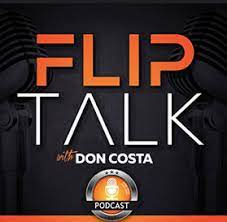|
Check out our new audio content!
Getting your Trinity Audio player ready...
|
By Edward Brown
Ever wonder why bank’s voluminous real estate loan documents usually include a covenant that the borrower has to accept which prohibits junior [or secondary financing]? Most of the time, these covenants don’t even have language that allows for secondary financing with lender approval. They merely state that no junior liens are allowed. In fact, the language is strong enough to imply that placing a junior lien behind the bank’s 1st mortgage constitutes a default [most likely a curable one] {curable defaults are ones that can be remedied, such as placing insurance on the property if the current insurance expires or is cancelled, as compared to incurable defaults which cannot be remedied (or, undone) such as the borrower filing a Chapter 7 bankruptcy}. Placing a junior lien behind the bank’s 1st mortgage is usually curable if the junior lien can be re-conveyed and the property is put back in the same condition [title wise, that is] as it was at the time the bank made its 1st mortgage.
One might ponder why banks are so strict about not allowing junior liens. After all, a junior lien is behind the 1st mortgage. In fact, some non-bank lenders actually prefer subordinate financing because it is as though there is additional security – another party has an interest to protect; however, traditional banks do not view it in the same way. There are a few reasons for this. First, banks have strict underwriting guidelines wherein they look at the DSCR [Debt Service Coverage Ratio]. The DSCR is a ratio that analyzes the cash flow after normal expenses compared to the monthly requirement for the loan in question [both principal and interest]. Many banks have changed their DSCR ratio requirement, since The Great Recession, from 1.1 to 1.35. This can place a tremendous burden on the borrower to have to come up with a larger down payment, in most cases, thereby requesting a lower loan request by the bank, which, in turn, produces a lower monthly loan payment. Many borrowers find that they have to come up with upwards of a 35% down payment as compared to 25% [pre Great Recession] in order to satisfy the 1.35 DSCR. Adding junior liens may place the borrower in the default provision of the DSCR if the junior lien requires monthly payments.

Another point to consider is that the bank priced its loan based upon original underwriting guidelines and being the only mortgage and that no junior financing would be added. The potential risk of negative changes in the DSCR or possibility that the borrower stripped equity away by placing a 2nd mortgage had not been considered, and the bank was not compensated accordingly. The more debt on a property, the more likely there is for a chance of foreclosure. Although the bank may be protected in its 1st position [presuming that the property has not substantially declined], when a foreclosure is triggered, there is a strong likelihood that the bank may have to alter the asset class of the property from performing to non-performing or it may be categorized as a “troubled asset” or put on the “watch list” by regulatory bodies even if the bank is not at risk for losing money. For example, if the borrower put 35% down on a $1,000,000 building and borrower $650,000 from the bank, the bank’s 65% LTV loan may be considered conservative. However, if the borrower obtained a 2nd mortgage for 15% LTV, the property now is 80% leveraged. If the borrower defaults on paying on the 2nd, he may or may not default on paying on the 1st. If the borrower defaults on both the 1st and 2nd, the bank’s loan clearly has turned non-performing. Non-performing loans can have a devastating effect on a bank, as they are required to set aside reserves, and defaults exacerbate this situation. The more reserves required to be set aside means the less money the bank has to lend out and generate income. Since banks lend out in multiples of their deposits, any money that is set aside [that cannot be lent out] has a negative multiplier effect.
The 2nd may or may not cure the 1st and start its own foreclosure. Even if the 2nd cures the 1st, the bank is still left with a possible foreclosing party [the 2nd]. When banks make loans, they are usually looking/hoping for those loans to continue until maturity. Once a loan is made, there is less work the bank has to do. They collect the interest income and hope they do not have to use other resources to babysit a loan. The cost of these resources tax the bank’s bottom line. Banks are not in the business of taking over borrower’s properties. They do not want REO’s [Real Estate Owned properties]. It is much better for them to carefully underwrite loans in the beginning and avoid problems. If the 2nd ends up with the property because nobody outbid the 2nd at the foreclosure, the bank is faced with a new borrower. The bank may have to underwrite the new borrower. In fact, if the 2nd is outbid at foreclosure, the bank is still faced with a different borrower than they originally underwrote. This new borrower may or may not qualify under the bank’s lending guidelines.

What about the scenario wherein the borrower borrows on a separate property and cross-collateralizes against the bank’s subject property? In this situation, the borrower is not attempting to strip out equity from the original property. The borrower may just be faced with the reality that he cannot obtain a loan for the target property unless he is willing to allow the new lender [on property two] to place this same loan on property one for added security. Unfortunately, although this seems innocent enough, if the bank finds out that a junior lien was placed on the property, [original one] they still may consider their loan in default. A lender who cross-collateralizes against other properties may trigger a foreclosure on all properties they encumber in order to get the borrower to move toward a solution to satisfy their loan that is in default [under their terms…usually for non-payment of mortgage payments].
Public policy may state that a bank is not allowed to interfere with a borrower’s business and force him not to purchase/borrow on other property that the bank has no involvement. There also may be a question as to the validity of the “no junior liens allowed” as this may technically interfere with the borrower’s business, especially if the bank’s 1st mortgage is extremely low. For example, if the 1st mortgage only has a balance of 20% [either because the borrow put a substantial amount down or the 1st loan is so seasoned, that it has been amortized down to a low balance], there is very little risk of the bank not getting paid in full. Even if a 2nd is placed upon the property, one has to question how the bank is impeded should the 2nd start a foreclosure. In previous scenarios above wherein the DSCR was negatively altered due to a 2nd mortgage, a 20% LTV on the 1st should still satisfy a 1.35 DSCR in most circumstances. After the 2nd obtains the property [or a new owner should the property end up in a higher bidder’s hands], most new borrower’s would hopefully be qualified to service a low LTV. Of course, each circumstance is independent, and most banks will want to preserve their right to enforce the “no junior lien” clause.

Usually, only if the bank pulls a preliminary title report, are they aware of the junior lien. They are not usually automatically notified. The main question is whether the bank will automatically declare a default if a 2nd is placed on the property behind their 1st? When banks find out that a 2nd exists, they may either ignore it or send a letter requesting/demanding that the junior lien be removed as per the terms of the bank’s loan documents. Whether a bank decides to pursue its demand that the junior lien be removed is up to the bank; however, they want to preserve their rights by notifying the borrower that they have requested removal, and thus, have written evidence that they contacted the borrower, so the borrower cannot claim ignorance or non-notification of the break in the covenant of the bank terms. This notification protects the bank should the bank choose to start its own foreclosure due to the default.
Most borrowers who have asked permission for a junior lien to be placed behind the bank’s 1st mortgage have usually been told, “No”. That is why most borrowers figure it is better to ask for forgiveness than permission in hopes that the bank will not find out about the junior lien until the borrower either sells or refinances the property in question.

Edward Brown
Edward Brown currently hosts two radio shows, The Best of Investing and Sports Econ 101. He is also in the Investor Relations department for Pacific Private Money, a private real estate lending company. Edward has published many articles in various financial magazines as well as been an expert on CNN, in addition to appearing as an expert witness and consultant in cases involving investments and analysis of financial statements and tax returns.




















